We're an affiliate
We hope you love the products we recommend! Just so you know, we may collect a share of sales or other compensation from the links on this page. Thank you if you use our links, we really appreciate it!
A shore power converter charger in a van or RV is another way to charge the solar system’s battery. You can plug the charger into a standard 120V outlet and it will rapidly recharge your battery.
- Let’s define some terminology real quick. Chargers are also called “converters” because they convert the 120V power to 12V power that the battery can use. (An inverter does the opposite. It “inverts” your battery’s 12V power to 120V power for household appliances.)
- Shore power is just a funky term for any energy source outside your van. This can be hook-ups at an RV campground or just a standard outlet at a friend’s house. (The term confused us at first, but turns out it originated in the boating industry which is obvious in retrospect).
Why Would I Want to Add Shore Power?
Not every van lifer needs a shore power charger. But, imagine you’re spending a beautiful but cloudy week at a campground. The clouds prevent your solar panels from producing much power. You’d rather not turn on your camper’s engine just to charge the batteries from the alternator.
After a few days your batteries are probably running low, and you know that drawing them too low can shorten their lifespan.
This situation isn’t too farfetched. You’d be glad to have a shore power charger to plug into an outlet and charge your batteries quickly.
Or as RVers know, you may simply have high electricity usage (air conditioner, electric space heater, etc) that solar alone cannot supply.
We don’t have a charger in our van because most of our time is spent boondocking around sunny rock climbing areas. There isn’t much in the way of external power at these spots.
How to Select the Size of Amps for a Charger Converter
Next, you need to choose what size (how many amps) charger you are shopping for. We will do some simple math before deciding on the correct charger for each system.
The charger size depends on the capabilities of the battery bank. (If you have more than one battery, use the combined Amp-hours for this comparison). Here’s the rule of thumb:
- AGM: Charger Amp = Battery Ah capacity * 20%
- Lithium: Charger Amp = Battery Ah capacity * 50%
- So, a 200Ah AGM can use a Charger up to 40A
- 200Ah Lithium can use a Charger up to 100A
We recommend checking the specification sheet for your batteries. Here’s a screen shot from RELiON’s 100Ah battery specifications:
This battery is recommended to be used with up to a 50A charger. And if we had two of these batteries in parallel, we could use a charger up to 100A.
Still deciding on a battery? We compared AGM vs. Lithium and chose our favorites.
Best Battery Charger Converters for Van and RV Shore Power
Now that you calculated the amp rating of charger for you (you did that, right?), here are our favorites:
If you need only a charger converter, our recommended:
Powermax PM4 Converter
Smart standalone charger compatible with all battery typesBest value charger available in a 15, 35, 45, 55, 60, 75, 85, 100, 120 Amps
2 year warranty, UL certified, and good reviews for 3-stage charging
(sizes from 35A to 100A)The Powermax chargers have everything we want in a charger at the best price. UL certified, smart charging, great reviews, and a 2-year warranty. And it comes in a tidy 8″x10″ size, weighing 7 pounds.
The unit is advertised to perform a 4th stage of charging (equalization); however it’s not automatic. We don’t need this function since charge controllers already do it.
Remember to calculate the max amperage your battery can handle, and choose from Powermax 35A through 100A. If you need a smaller charger, we recommend Samlex’s 15A Charger.
If you’re designing a new system and don’t have a shore power charger OR inverter yet:
AIMS Power Pure Sine Inverter/Charger
Simplifies electrical system by combining components into oneQuality pure sine wave inverter
Significantly cheaper than other inverter/chargers
Not a hybrid inverter
Not UL certified. AIMS offers UL certified inverter/chargers at higher price point (but still cheaper than competitors)
(also available as 2,000W inverter/70A charger)This AIMS unit isn’t actually just a charger, it’s a combo inverter AND charger. Combo inverters and chargers have all the functionality of the separate units, but in one package. This significantly simplifies your system, and cuts down on cabling and fuses to buy. It’s also smaller and lighter than installing the devices separately. The AIMS inverter/charger is only about $100 more than equivalent inverter and charger separately.
This unit is a 35 amp charger and 1,250 watt inverter. For most van lifers this will be adequate capacity, but RVers may want the power of their 70A charger/2,000W inverter or 100A charger/3,000W inverter
The charger is “smart” and will adjust charging profiles based on the battery state. The inverter has industry standard features such as low-voltage battery alarm, GFCI outlets, and a 3x surge capability.
The main limitation of this product is does not use hybrid technology through the inverter while also plugged in to shore power. Inverters/chargers with this capability are marketed as “hybrid” and are quite a bit more expensive. Hybrids recharge the batteries when there is surplus power or deliver more power to the loads if they require more than the AC input can supply by itself. Unless you are drawing significant 120V AC power all the time, we don’t see that this feature is worth the extra cost.
You will want to get an external switch for this unit. AIMS sells a few different external switches for different inverter types, make sure to buy this LED Remote Panel which is compatible with this inverter/charger.
Take note this inverter is not UL certified. AIMS also sells 1,000W and 1,500WUL certified inverters/chargers at a higher price point. These inverters are also about 4% more efficient (92% vs. 88%).
If you have a smaller battery bank (less than 150Ah of AGM):
Samlex 15A Battery Charger
If you have less than 150Ah of AGM batteries, this is the best chargerSamlex is a well-known and trusted solar/12V brand
Pricy. Samlex’s 15A charger is more than Powermax’s 45A charger
This is the charger for you if you have less than 150Ah of AGM batteries. At that amount of battery capacity, any of the other bigger chargers will be too high of a current for your battery.
As with all the chargers we recommend, it’s got protection for short circuit, overload, reverse battery connection and over temperature. It’s UL listed with a 2-year warranty. We’ve heard great reports on Samlex’s chargers. However, they generally aren’t our favorite choice because they are pricy. But for a 15A charger, this is your best and only option.
For power users with a big solar array and high usage of 120V AC:
Victron MultiPlus
The king of the high-powered inverter charger market4-stage charger and hybrid pure sine wave inverter
Pricy, big, and heavy
If you’ve got big 120V AC needs, this baby will do everything you want and more. It’s well regarded as the best of the best inverter/charger combo.
The MultiPlus is programmable and available up to a gargantuan 10,000 watts. All this comes at a hefty price tag.
Types of Shore Power Chargers
Older chargers are “simple” chargers that only have one charging profile. You won’t find many of these sold anymore so that’s that!
All the chargers we’ve listed are “smart” chargers that have a 3-stage charging profile. These chargers adjust their output voltage based on the battery’s state of charge. The result is a quicker and more efficient charge of the battery.
Some chargers also have a 4th stage, equalization. All quality solar charge controllers have equalization stages, so we don’t need the shore power charger to have this capability.
Combo Inverter/Chargers
Combo inverter and chargers simply combine the functionality of both products into one device. This significantly simplifies wiring your system, and saves you space.
These are quite convenient but most of them are really expensive ($1,000+). Fortunately the AIMS inverter/charger is only about $100 more than equivalent inverter and charger separately.
We wrote about what to look for in an inverter.
How to Choose a Charger that is Compatible with your Batteries
Most chargers are not advertised as working with lithium batteries. The chargers that we recommend are marketed as for AGM but are also compatible with lithium! That’s one of the perks of lithium battery management systems.
Battleborn (https://battlebornbatteries.com/charger-compatibility-table/) and RELiON (https://relionbattery.com/faqs) websites state that the chargers we’ve recommended will not damage the batteries.
How to Use Shore Power Battery Charger
RV campgrounds generally have 20A, 30A, 50A plugs on a power pedestal. The 20A outlet is a standard 3-prong outlet.
If you have a lighter sized charger, simply run an extension cord from the outlet to your charger. If you’d like to drill a hole in your vehicle, you can add a cable hatch to run the cable through. You may encounter a power pedestal that only has the 30A and 50A plugs. If you only have a standard extension cord, you’ll need an 30A to 15A adaptor.
A higher amperage sized charger like the Victron MultiPlus has more a involved setup. You can’t just plug an extension cord into it. You will need to add a 30A power inlet to the outside of the vehicle. Plug into the power pedestal’s 30A outlet with a 30A shore power cord.
Ready for more info?
Visit the Van Conversion Build GuideWe sincerely hope this information is helpful on your build journey!
This post contains affiliate links that may earn us a commission if a product is purchased. But, we always strive for the reuse and repurpose of materials – so we encourage searching for a local used option before buying from our links.

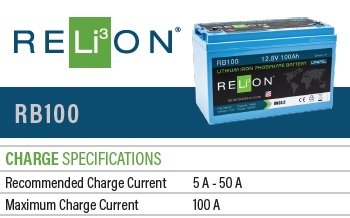
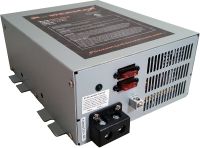
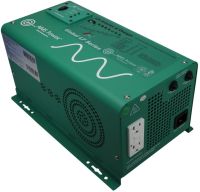
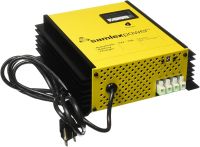
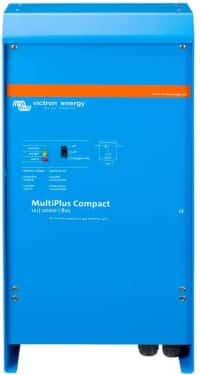
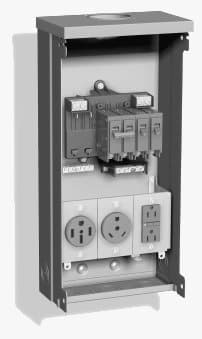
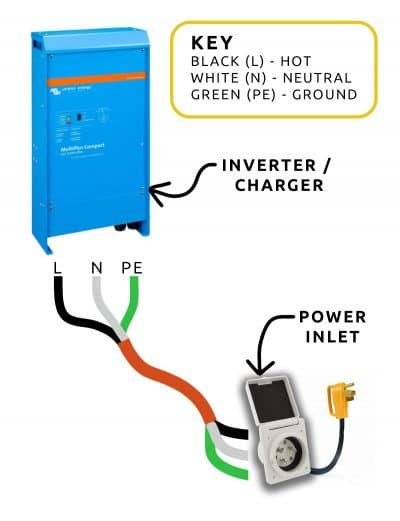
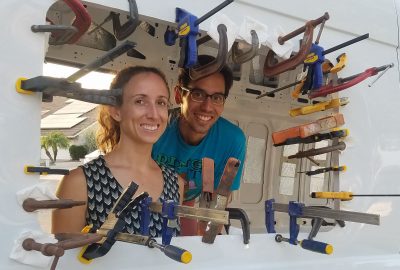


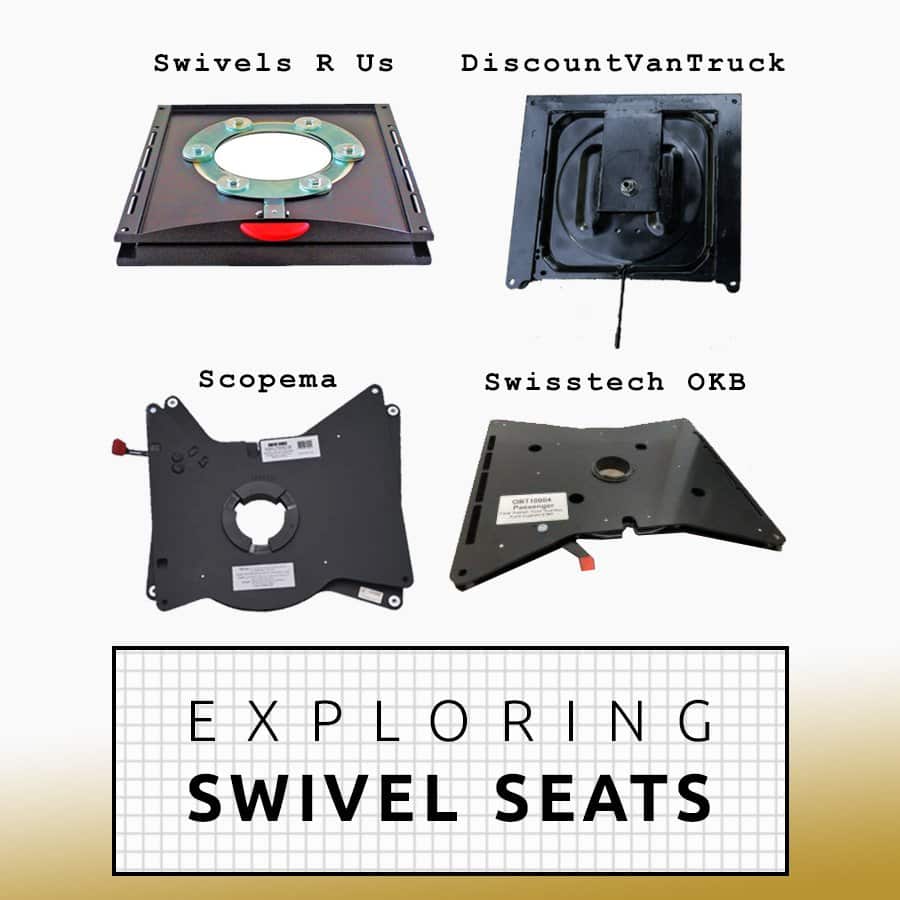

These are SOO helpful. Thank you! !! Here’s a question for you: You explained that the lowest amp rating is always the max in a multi-rated setup (eg a 15A house plug into a 30A RV socket[thru adapter], still maxes as 15A. Makes perfect sense. So how does that fit with the charger voltages listed above? If you only ever had means to plug in to a 15A shore power, wouldn’t the max converter you really need be 15A ?
I believe I understand your point, and it sounds correct. You can size the converter based on the highest amperage of plug you know you will have access to
Thanks, this is very helpful!
I keep reading everywhere that campsites in the US have 20A (or 15A), 30A and 50A plug points, but I can’t find out on the converters themselves what their limiting input current is, only what the output to the batteries is. Is this because they don’t have a limit and I can pick the wiring and plug type to suit? Or have I missed something fundamental here?
The only one I could find the input current rating for was Samlex unit which said 15A.
I don’t want any AC loads in my van so will be purely running off 12V and solely need a charger converter.
Thanks.
I have read your blog, and I would also like to add my point on this. I think the most common reason for using a battery charger converter is to charge your car battery when you are traveling. Some people also use them in their homes or other places where they want to charge an appliance with a higher voltage than what the local power supply provides. If the RV or Van is not plugged into an electrical outlet, then you will need to use the converter. The converter allows for compatibility with a wide range of electrical outlets. Thank you for sharing this blog with us.
I replaced a failing converter that was making squeaking noises and dimming the lights with an MBA power converter. This one works great. Pretty straightforward install with no issues. I like this product’s open design, which, together with the cooling fan, ensures more effective heat dissipation. Surprisingly, the cooling fan is almost noiseless. One will never feel annoyed by the loud buzzing sound of some RV converters.